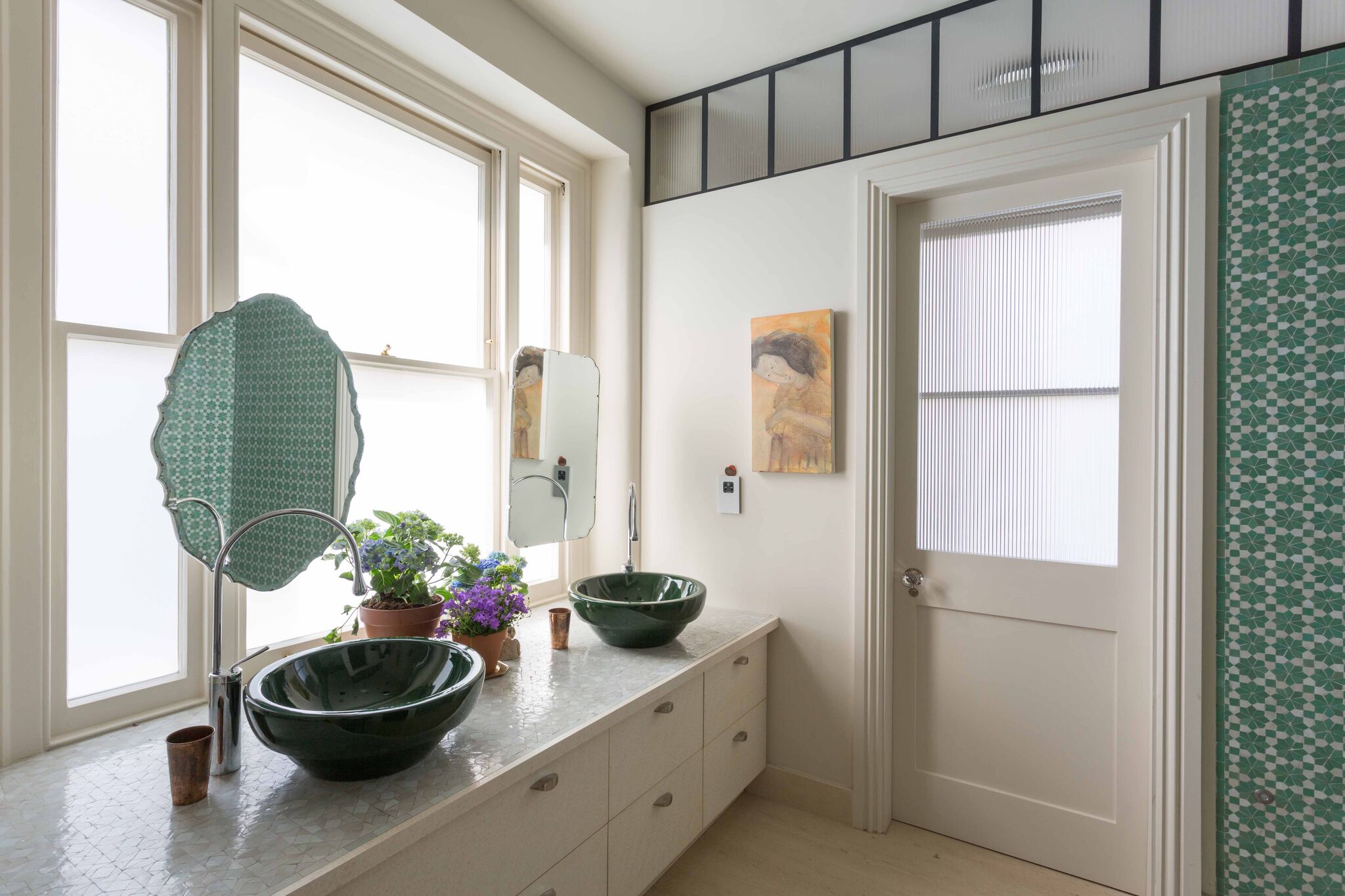Mirrors have been used in grand interiors for hundreds of years to create a sense of glamour and awe. Before mass-manufacture they were a luxury; think of King Louis XIV’s stunning Hall of Mirrors, constructed between 1678 and 1684, with mirrors shaped to replicate the arched windows opposite whilst reflecting the art, marble and chandeliers of the breath-taking hall, stunning visitors at his time and now. Mirrors only became commonplace in interiors with the development of the silvered-glass mirror by a German chemist, Justus von Liebig, in 1835. It was the start of mirror manufacturing on a wider scale making it possible for people other than the wealthy to own them.
As designers, we consider mirrors in every project as, apart from being a necessity in bathrooms and dressing rooms, they are a brilliant source of decoration adding light, interest and a feeling of space. You can use mirrors in unusual shapes, with beautiful frames, made with old techniques such as verre églomisé which is very popular at the moment, and antiqued mirror. The ways with mirrors are multiple.
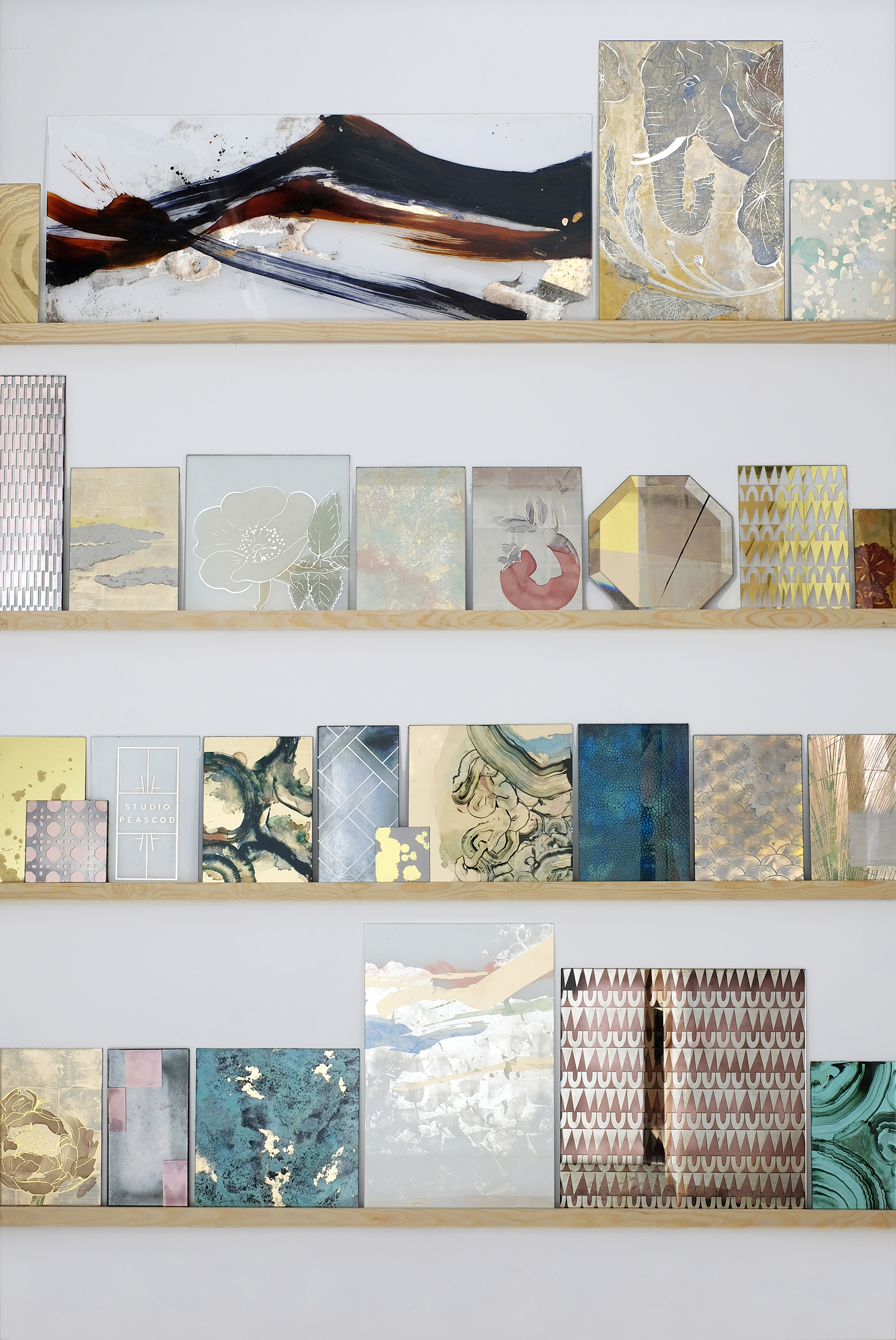
Get inspiration from our top 7 creative ways to use mirrors in your space:
Use multiple mirrors in one room

The vanity unit of this bathroom is in front of the window but it doesn’t create a problem for the mirrors, it is an advantage. As you go through your wake-up or wind-down routine you have the benefit of natural light. The unusual shaped mirrors seem to float as they are attached to the window frame, set proud of it. The dressing table to the left has a full mirror covering the wall space increasing the light in the back of the bathroom and a magnifying mirror is installed to the side. If done in the right way, having multiple mirrors doesn’t look over the top, but stylish whilst being incredibly practical.
Use coloured and shaped mirrors

Mirrors can be very expensive but one way to include mirrors in your interior without breaking the bank is to opt for acrylic mirrors. They are light and easy to cut so there are a lot of interesting shapes on the market. You can get a similar look to the one in this hallway with mirrors by Haidee Drew.

This bathroom mirror is specifically cut with a curvy shaped outline creating an interesting frame. It’s a great way to make a mirror a design feature. You can use fun shaped off the shelf mirrors such as this one by Ferm Living.
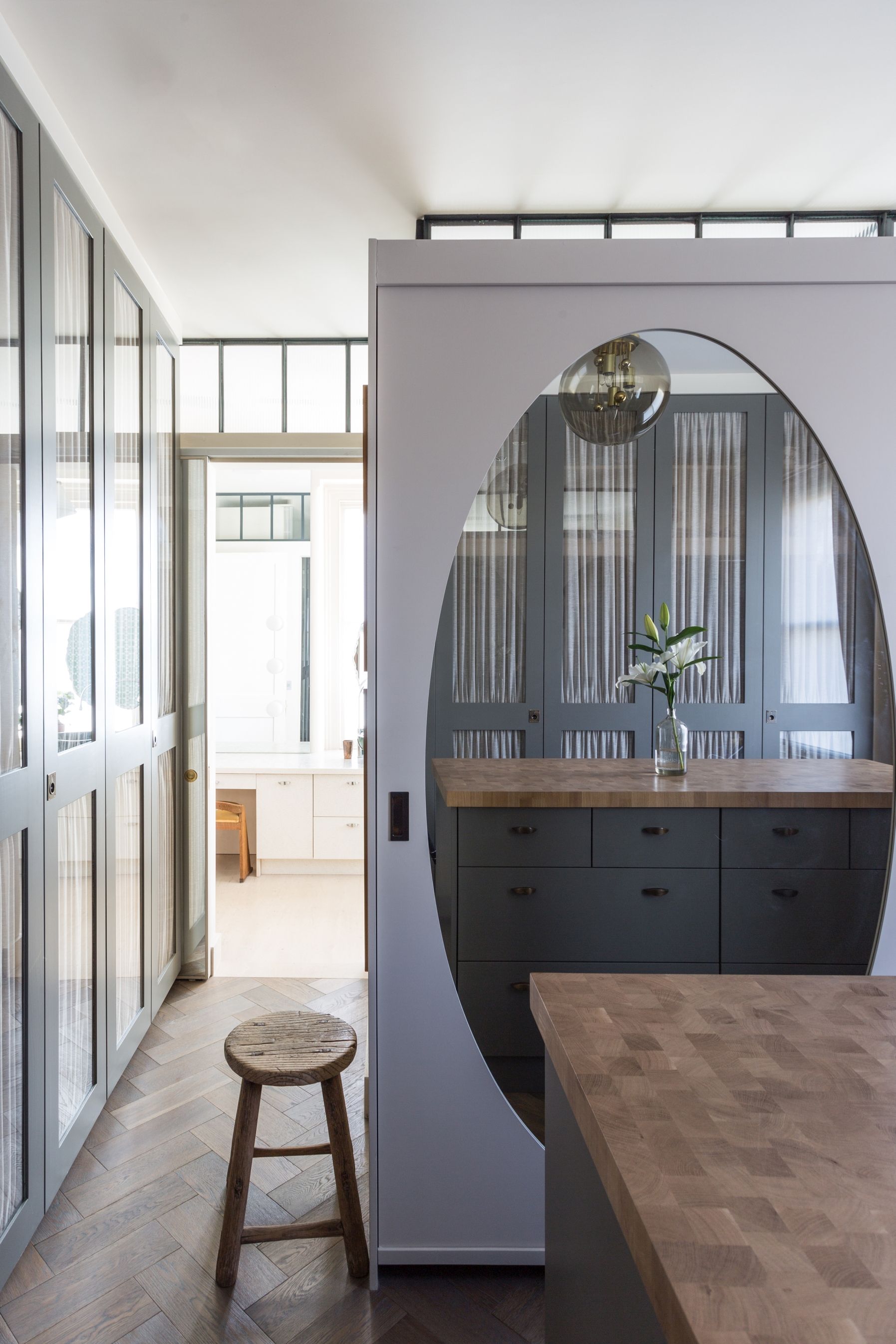
Using mirror on wardrobe doors is a simple way to incorporate a large mirror if you don’t have ideal wall space. These mirrors in an oval shape add variation to the shapes in the room, contrasting well with the linearity of the wardrobe doors.

The round brass mirror in this dining room brings a warm metallic pop to the light walls. You can find a similar mirror by Danish brand AYTM here.
Invest in a statement mirror
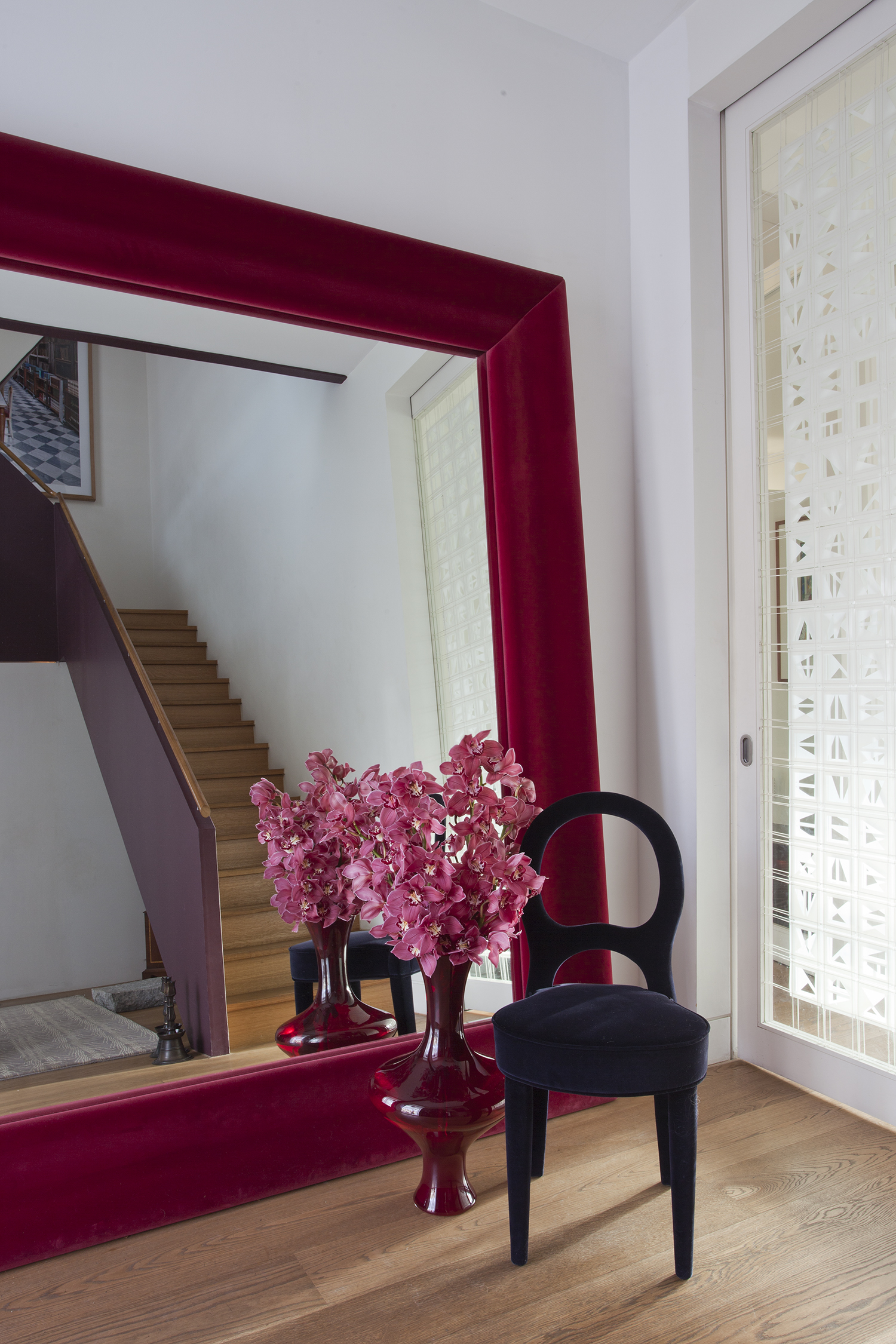
You don’t always need to use art to make a statement. This oversized mirror with a deep red velvet frame reflects the rest of the hallway and stairs beautifully whilst bouncing ample light around the space. Although this mirror is in a spacious home, placing a mirror on a wall at the bottom of a staircase in a smaller home adds so much to the feeling of space, especially if there are no windows nearby as it enhances light.
This mirror by Jimmie Martin will add an element of surprise to any space.
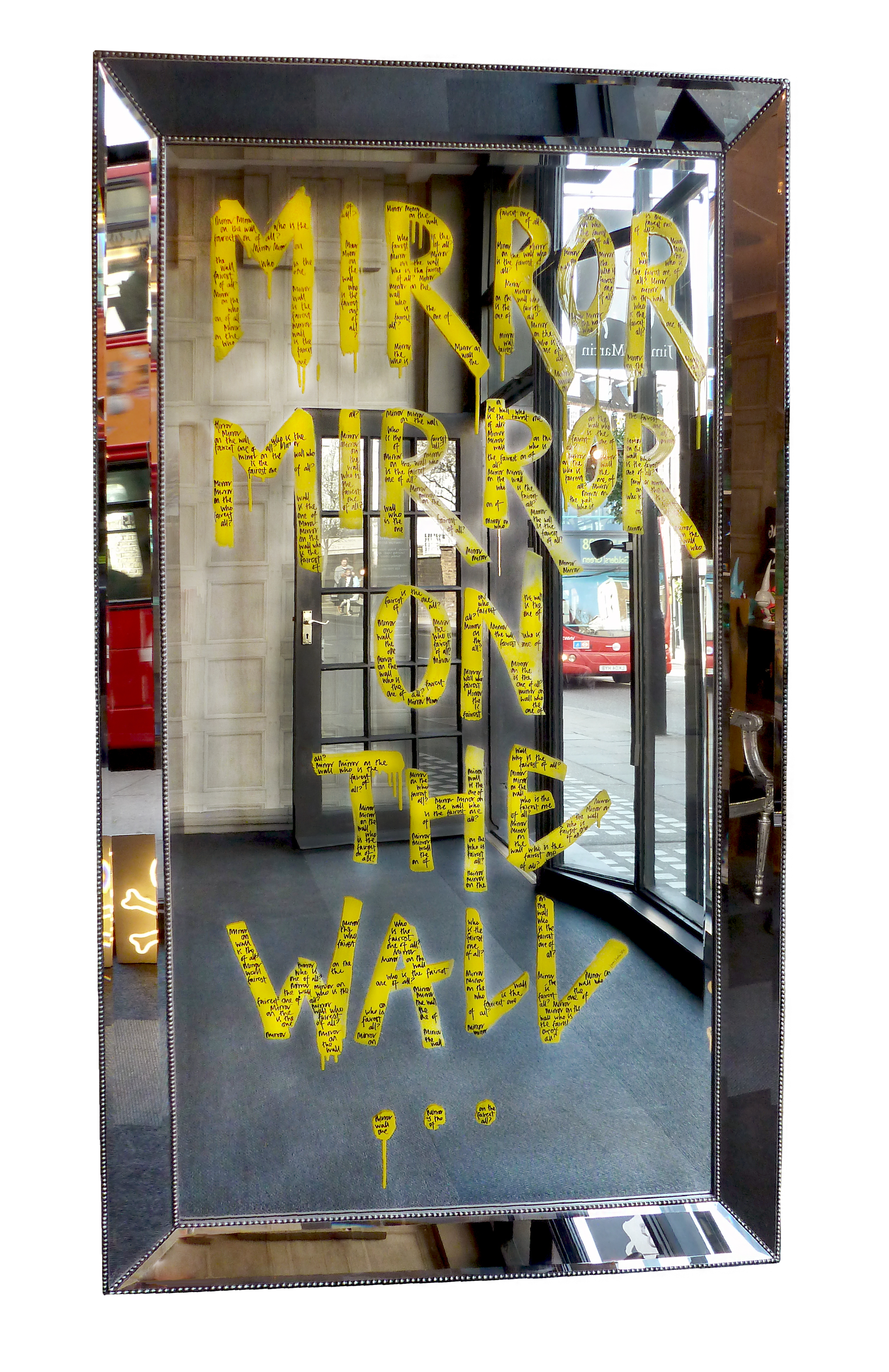
Use mirror on furniture
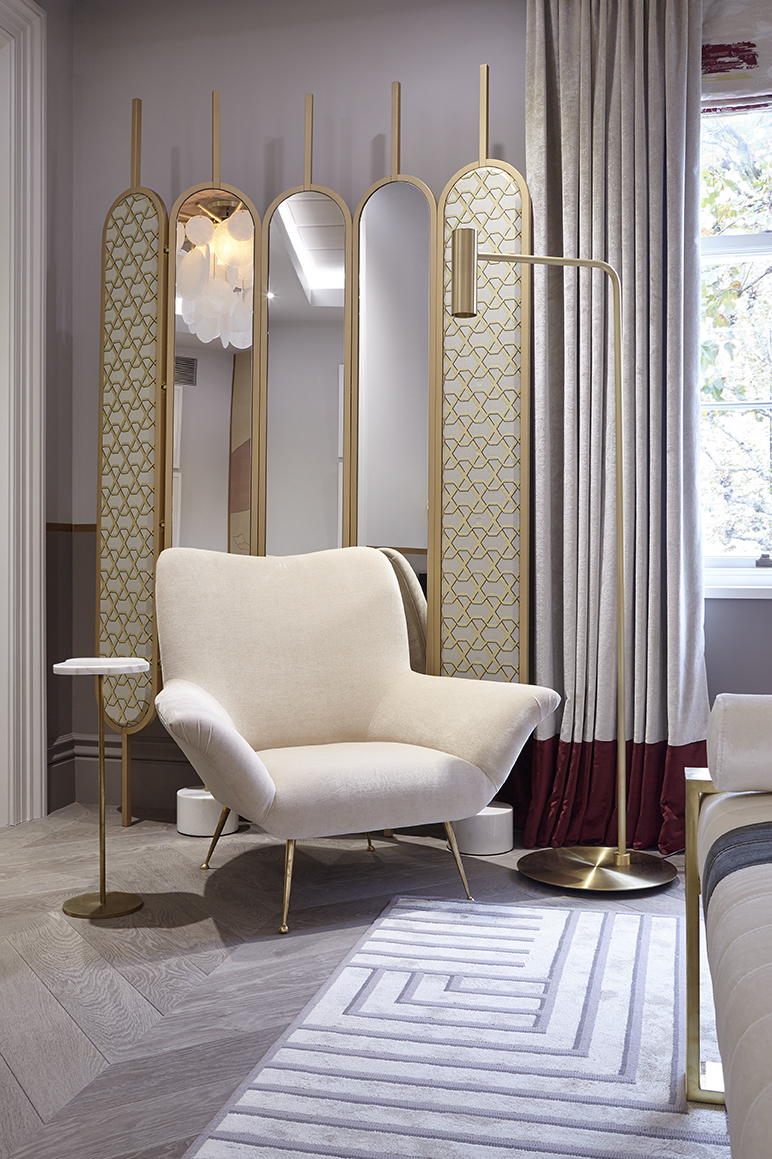
This screen by Gallotti e Radici with three mirrors in the design adds a great design feature to the space. It can be adjusted to different configurations and moved about easily.
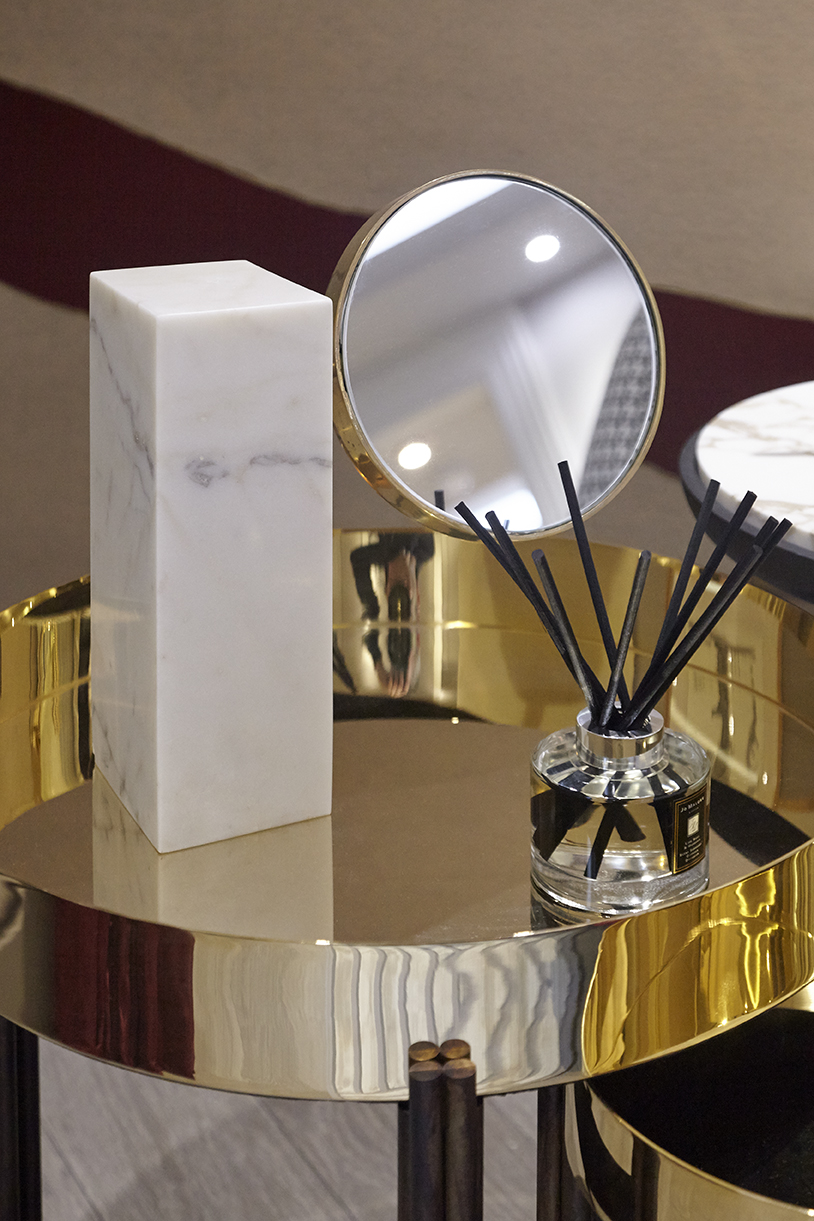
Using mirrored furniture is a simple way to add metallic accents into spaces. The shiny reflective surface brings a pop of light into any interior scheme.

The end of this row of wardrobes is clad in antiqued mirror. It enlivens the space as soon as you walk into it, reflecting views of the furniture and artwork in the space. By using a dappled golden tinted mirror warmth is brought into the scheme, rather than plain silver mirror which can look cold at times.
Use details of mirror as accents
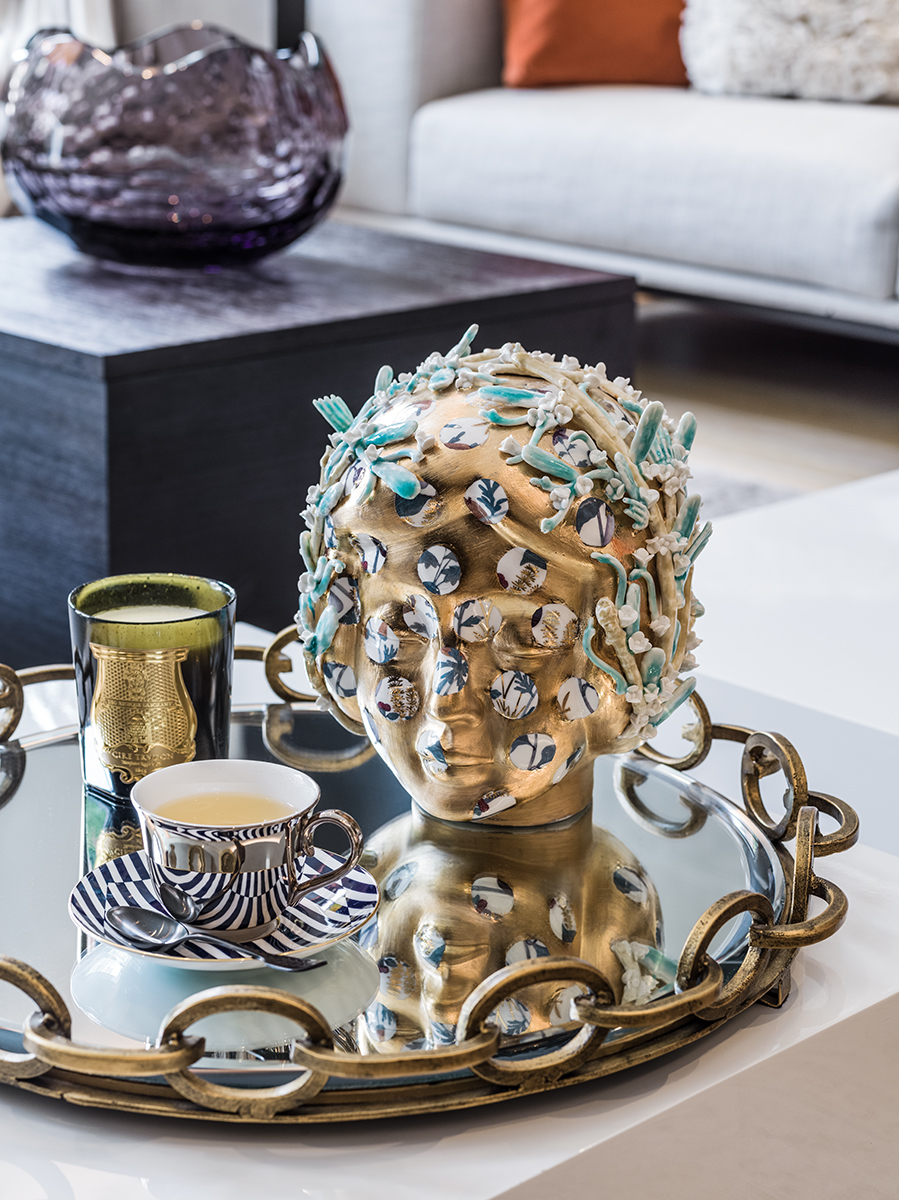
This mirror has been used as a tray on a coffee table. Not only does it reflect the golden bust but by adding a reflective horizontal surface it creates a contrast to the matt finishes of the other surfaces around it.
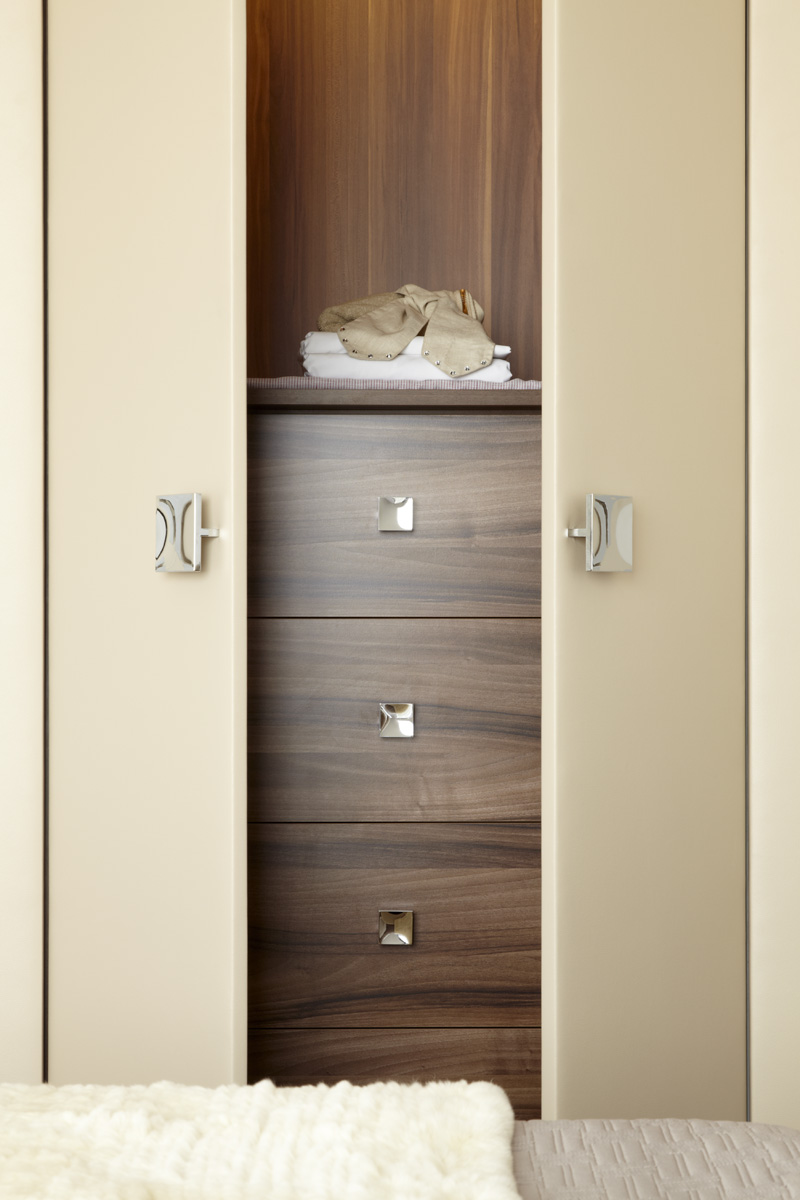
Choose polished chrome handles for furniture and carpentry to bring a lustrous accent to an interior.
Use mirror in the architecture of your space
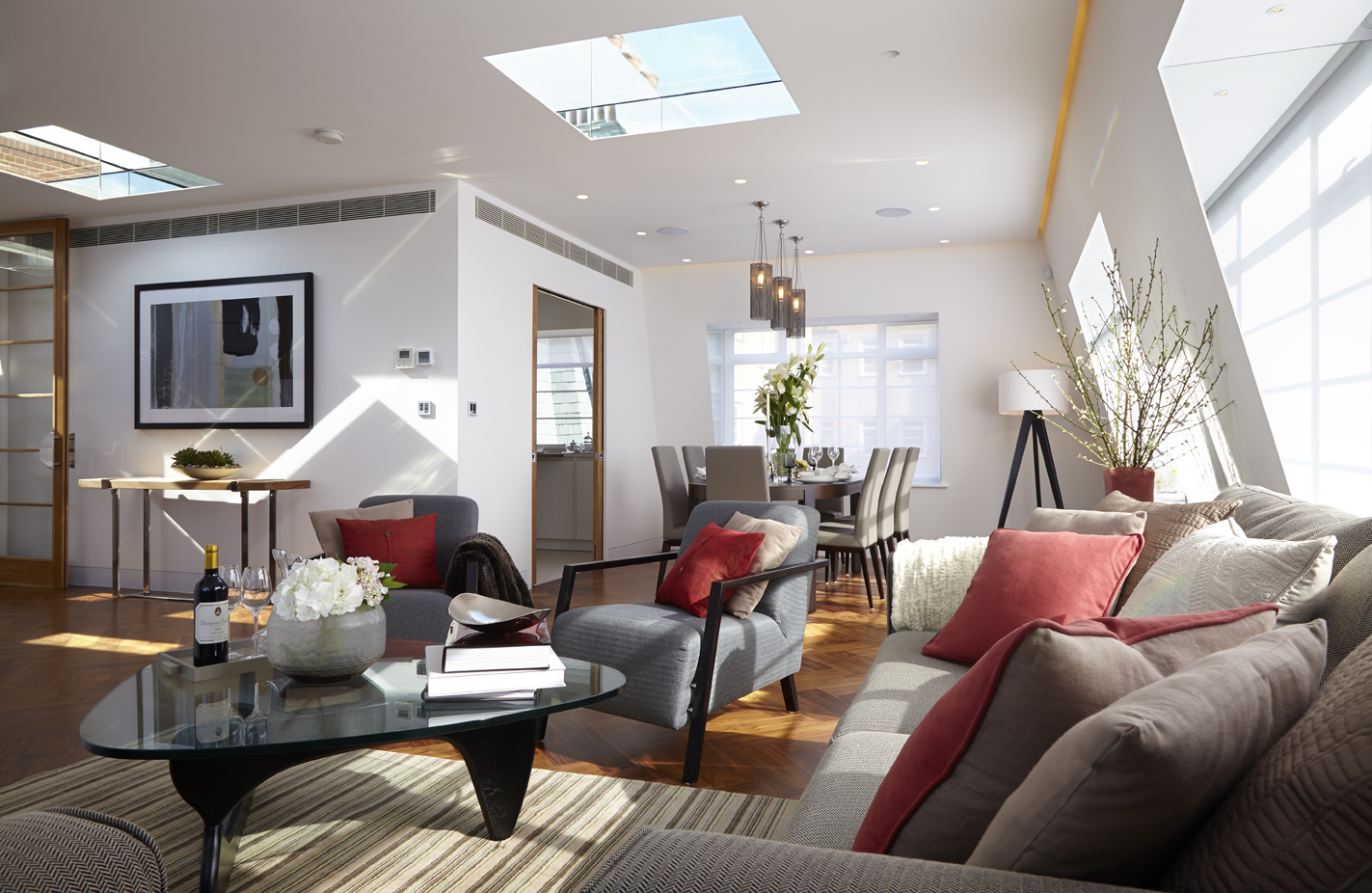
Bring more light and views of the exterior into your interior by installing mirrors in recesses such as the mirrors placed in the window recess in this apartment. The recesses of the skylights have also been clad with mirror bringing views of the rooftops, and sometimes pigeons, into the space! This clever trick allows light to be cast onto the walls that are not directly opposite windows. The space is brightened further by bringing more light into it through these reflective surfaces.
Multiply a great feature of your home though reflections
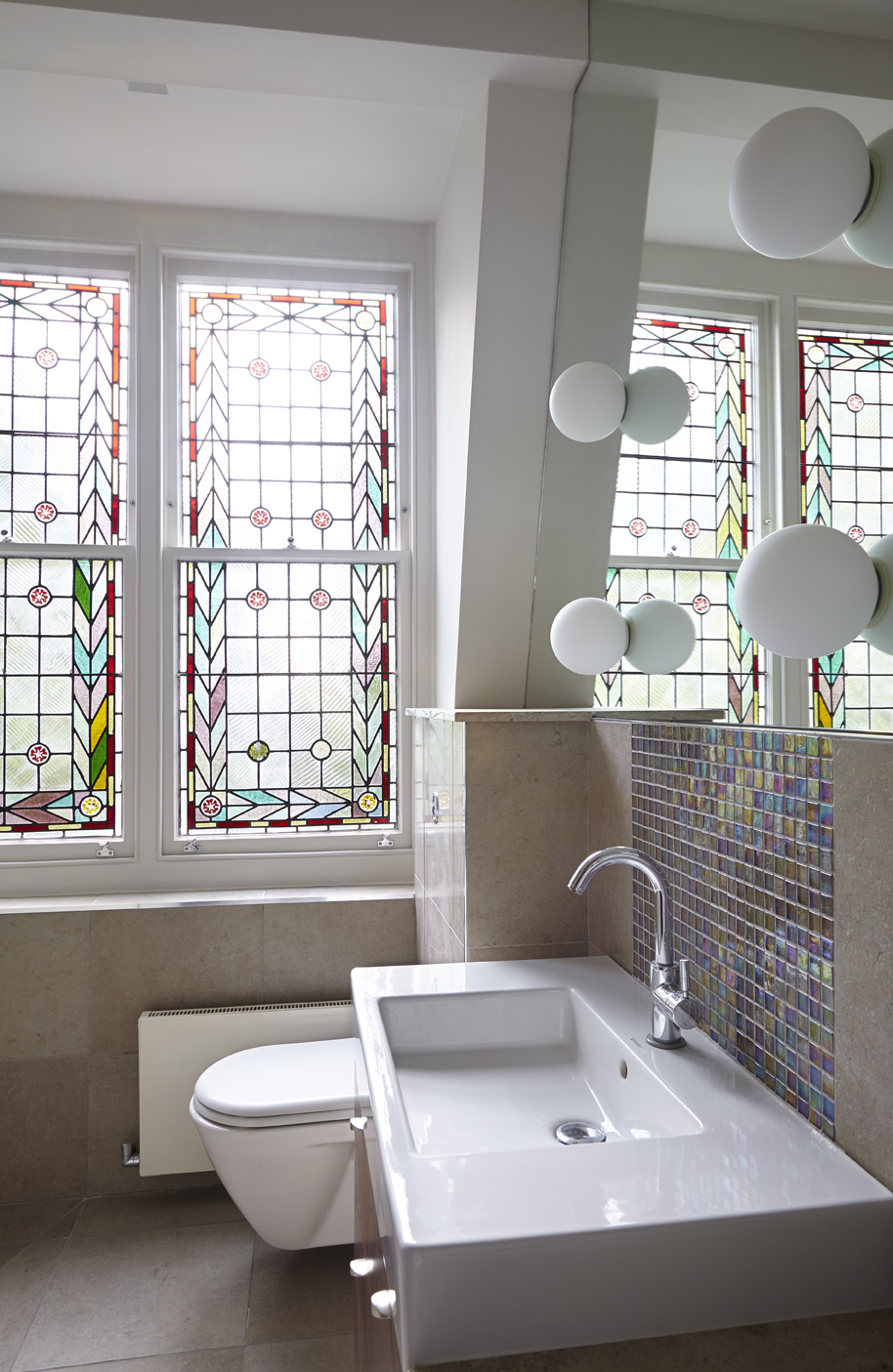
Every bathroom needs a mirror and this one has a large mirror cut to size covering the wall above the vanity. The stained glass windows are a beautiful original feature of this Victorian house and by using a large area of mirror to cover one surface the feature is enhanced and reflected in the space. Four lights are installed on top of the mirror adding a practical and fun element and the mosaic used for the splash back picks up on the colours of the stained glass beautifully. You can use this technique by positioning mirrors near a beautiful architectural feature.


